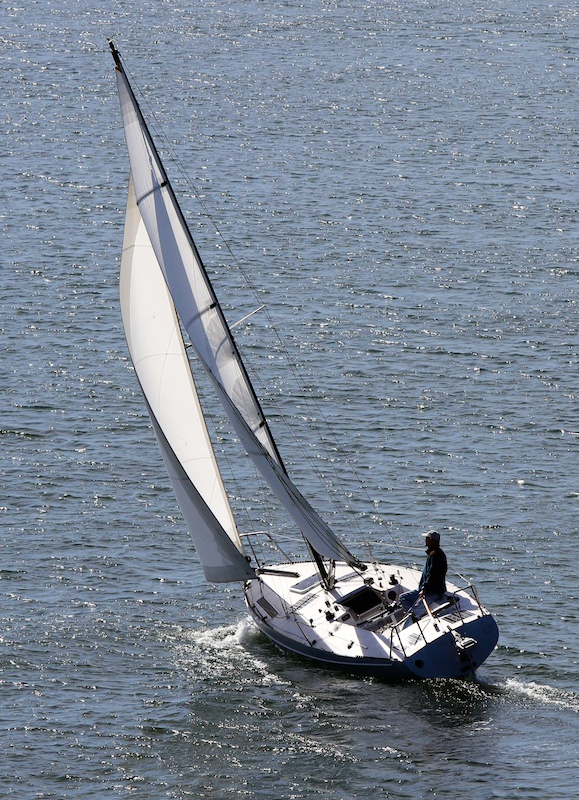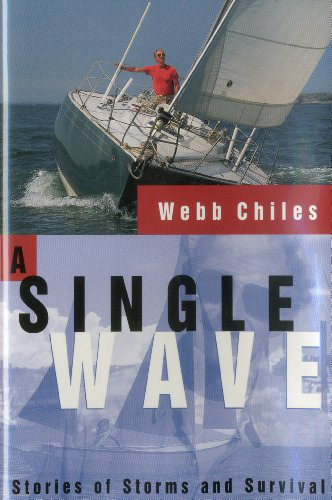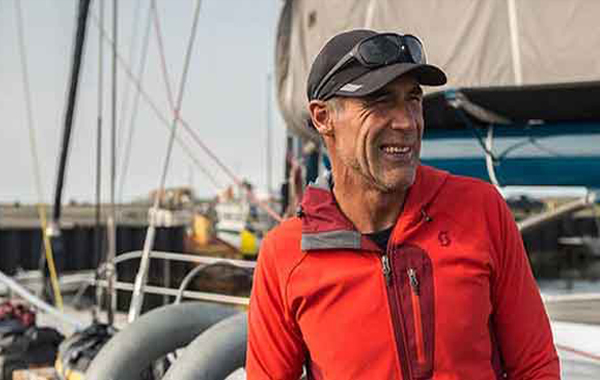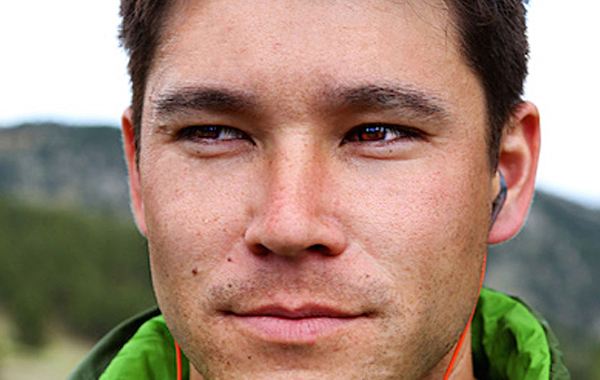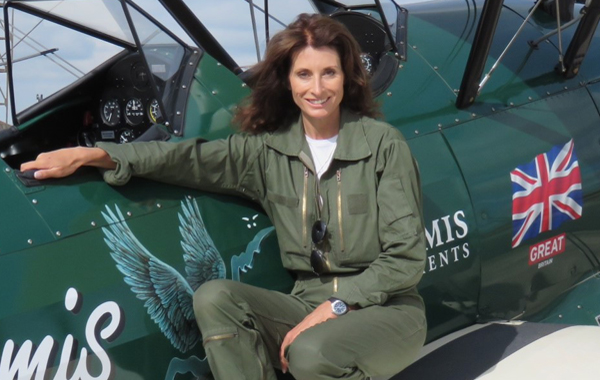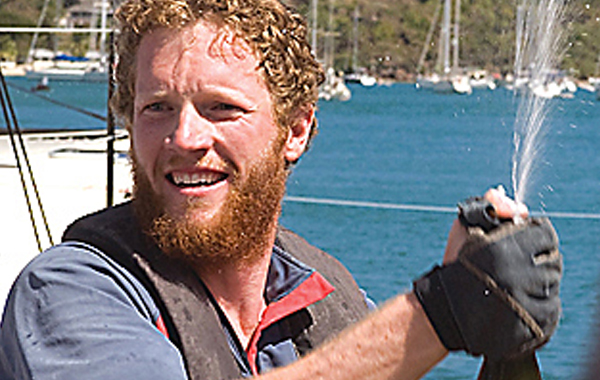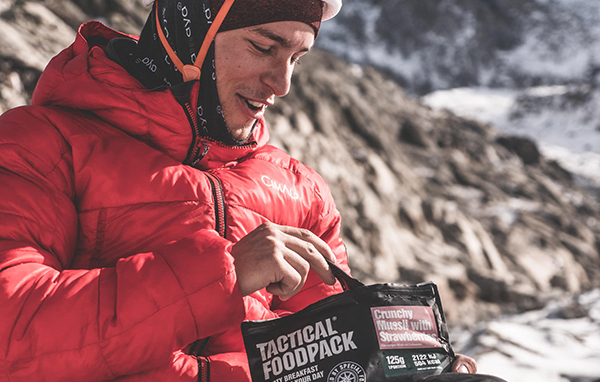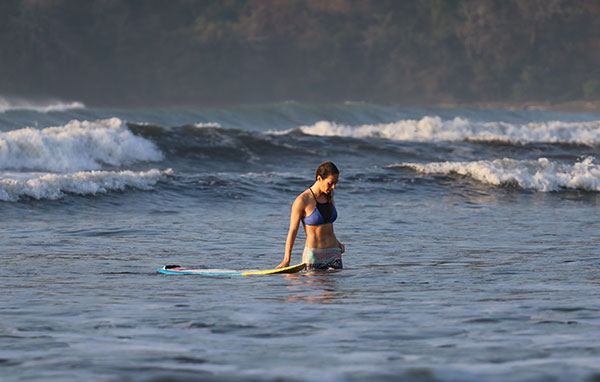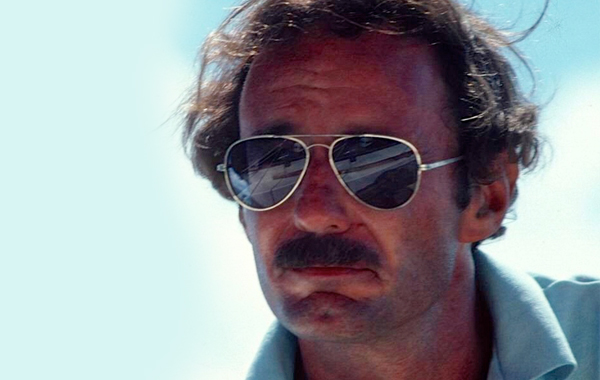
Where did you grow up and how and when did you first get involved in sailing?
I was born in Saint Louis, Missouri, and grew up in a suburb, Kirkwood. My fellow Missourian, Mark Twain, said that all adventure begins with running away from home and with a book. I only ran away from home once and not for long – I didn’t have any money; but I was not close to my mother and stepfather and didn’t want to be there and escaped in books.
My grandparents on my father’s side retired to a tiny house in Mission Beach, California when I was a teenager. I spent my high school summers staying with them, all day every day on the beach or in the water. I watched passing sailboats and told myself that one day I would do that.
Who were the major influences that sparked your passion for the ocean?
There really were no major influences, certainly not specific people. No one in my family sailed. I remember reading Joshua Slocum’s Sailing Alone Around The World and pieces in National Geographic about Irving Johnson and the brigantine Yankee. But I invented myself. As I wrote in the first words of my first book, ‘Storm Passage’, “I was born for this”.
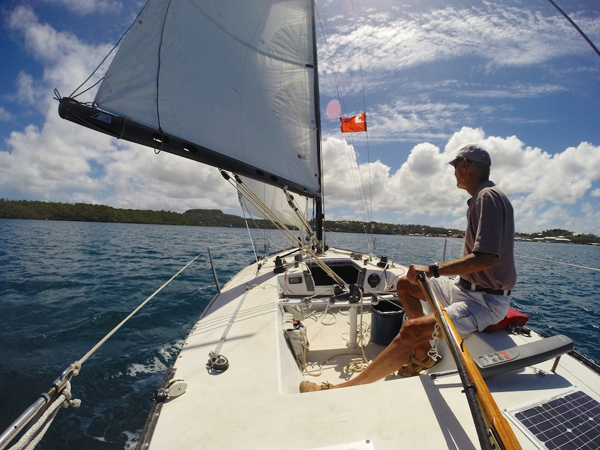
WEBB CHILES is a writer and a sailor with an incredible story to tell. He has written seven books and had hundreds of articles published. As a sailor he has sailed five circumnavigations and set several world records. Long ago he became the first American to sail solo around Cape Horn.
In our interview with Webb the words rolled from his tongue with the ease of the waves he has spent much of his life on. They will mesmerise and delight all those who share just an ounce of his lust for life.
Your feats as a sailor include five circumnavigations and several world records. Could you give us some more information regarding these achievements and what stands out as the greatest?
My first circumnavigation was in a 37′ cutter, ‘Egregious’, from San Diego. I sailed around the world with two stops, rounding Cape Horn in what was then a world record for the fastest solo circumnavigation in a monohull. At 203 sailing days, it broke Sir Francis Chichester’s time by more than three weeks.
About a year after completing that voyage I began thinking of another one. I wanted a qualitatively different challenge and decided to try to sail around the world in an open boat. I choose an 18′ English built Drascombe Lugger yawl which I named ‘Chidiock Tichborne’ after an Elizabethan poet. The problem was that I had a 19 foot name on an eighteen foot boat! I sailed Chidiock Tichborne from 1978 to 1982, when I was jailed for a few weeks in Saudi Arabia, falsely accused of being a spy.
Those voyages were solo. I am an only child, so being alone is natural for me, but I am also fond of women and part of my next two circumnavigations (one in a 36′ sloop, ‘Resurgam’, and the other in a 37′ sloop, ‘The Hawke of Tuonela’) were made with the women then in my life. On ‘Resurgam’ I again rounded Cape Horn on a passage from New Zealand to Uruguay.
My fifth circumnavigation was made in ‘The Hawke of Tuonela’ and was again solo. That voyage was from Opua, New Zealand west. Part way through I realised that I might beat my own best time, long since surpassed as a world record, in ‘Egregious’, and so I raced myself. I won. Completing my fifth circumnavigation in 191 sailing days.
I cannot say which was the greatest. I still know the date I rounded Cape Horn for the first time, but the ‘Chidiock Tichborne’ voyage was perhaps more radical, as may be my present voyage in an ultra-light Moore 24. Possibly the greatest achievement is that I’m still alive at 72 and still on the edge of human experience.

In your younger years you became the first American to sail around Cape Horn. What was that like and what was the inspiration behind the trip?
I first tried for Cape Horn in late 1974, had rigging damage near the Equator, went to Tahiti for repairs, tried again from there, sustained damage again and sailed all the way back to San Diego to get the boat sorted out then set off on my third attempt in October 1975.
Not far south of the Equator the hull developed a crack. Having turned back twice before, I was not going to do so again. I wrote that it was victory or death. Now I probably would not use the word ‘victory’ but just completion. We don’t conquer oceans or capes or mountains, we only transit them. So I kept sailing south, and I kept bailing. By the time I finally made it into Auckland, New Zealand 18,000 miles later in March 1976. I had been bailing seven tons of water out of the boat with a bucket every 24 hours and after being at sea in survival conditions, including hurricane force winds four times and turning the boat mast under the water three times, I married the first woman I met.
In those days I navigated with a sextant and as I neared Cape Horn the sky had been overcast for several days and even though it was December, the southern summer, there was sleet and snow. One afternoon the sun shown dimly through the clouds and I got a single position line that caused me to believe I could turn east. I did and just before nightfall saw the Diego Ramirez Islands ahead.
The wind increased that night and by dawn it had reached Force 12, hurricane strength. Twenty to thirty foot waves were breaking on both quarters, coming up from the southwest and rebounding off the unseen land to the north. I lowered all sails and for one of the few times in all my voyages tied myself in the cockpit and hand steered, surfing down waves at hull speed under bare poles. The servo-rudder of my self-steering vane was still in the water and a rooster tail rose from it as from a hydroplane. Shortly before nightfall the wind dropped to perhaps 50 knots and I could let the self-steering vane steer. I went down into the cabin and bailed, pleased that the water I was bailing into the Atlantic Ocean that night had come from the Pacific Ocean that morning.
You are also a writer with seven books published. What can readers expect from the books and how important is writing in your life?
I define myself as an artist. One of my best known lines is: ‘A sailor is an artist whose medium is the wind’ (another is: ‘Live passionately, even if it kills you, because something is going to kill you anyway’). I have said that an artist’s defining function is going to the edge of human experience and sending back reports. Those reports could be a book, a voyage, a climb, a painting, a poem, a symphony. Others have said of me that I’m a writer who sails, not a sailor who writes. I like to believe that is true.
What readers will find from my books, some of which are available in Kindle editions, some still in print, some for free on my website (www.inthepresentsea.com) are my reports. No sponsors. No shore teams. No races. No PR hyperbole. I take pride in having set world records without ever calling a press conference. No boat that cost more than a mid-priced car. No way to call for help, until now as on my present voyage I carry a Yellowbrick to let people follow me. The tracking page is: http://my.yb.tl/gannet. Everything at risk from my life to all that I owned in the world without insurance. Almost dying is a hard way to make a living, I wrote. And that’s what I did. And do.
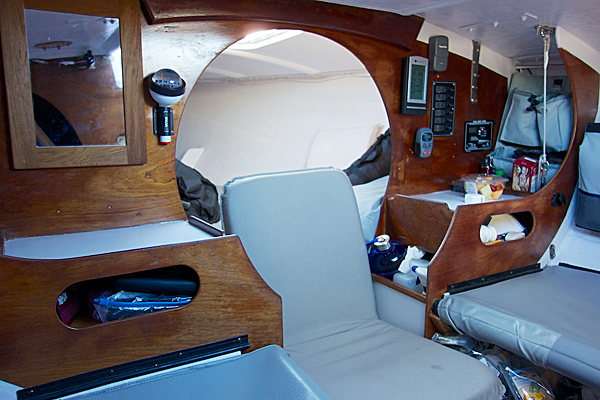
We must also mention the other passion in your life – women! How have women and being in love shaped the man you are today?
For many people, I am the person they know who has most been completely alone in what I call the monastery of the sea. I’m not sure exactly how long, but it’s perhaps more than eight years in total that I have spent on solo passages – and yet I am the person they know who has been most married—six times to five women. It is possible to want mutually exclusive things and with me it is the unmet need that calls the strongest. Women liked me; I liked women. I also like to sail alone.
By chance I was a young adult during the golden age of sex. It didn’t last long. Twenty years between the introduction of the birth control pill in the early 1960s and AIDs in the early 1980s. I was 21 in 1962 and many of the most charming, intelligent, beautiful and sensual women of two generations shared some of their lives with me (I hope joyfully). They certainly brought joy to me!
I’ve now been married to Carol, an architect a generation younger than I, for 20 years. I think, and hope, that she will go the distance.
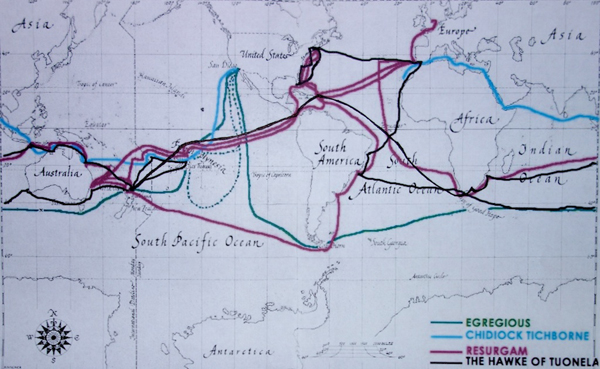
How are you currently spending your time? Do you have any exciting plans for the future? Any more books in the pipeline?
I am speaking to you sitting on a Sportaseat on the floorboards of what I laughingly call The Great Cabin of Gannet, my Moore 24, on a mooring on a rainy day in Opua, New Zealand, during what, time and chance permitting, will become my sixth circumnavigation.
I’m 72 years old and will turn 73 in November, but other than going blind in one eye a few years ago, I’m in good health. I wanted a new challenge, as I did long ago when I conceived the open boat voyage, so three years ago I bought a Moore 24, the first of the ultra-light classes to be built in the US. I set out in May 2014 to sail her around the world, which has never been done on a Moore 24.
I reached New Zealand five stops and four months later. Moore 24s have often been raced single and double handed from California to Hawaii, but Gannet is the first to cross the Pacific. What is important to me are not the firsts, but the challenges in solving new problems and pushing limits and the joy of being at sea.
I’m sitting on the floorboards because I’m 6’1” and Moore 24s are best suited for hobbits. When I stand up in the companionway the deck comes to just above my waist. I wear the boat. The floorboards are the only place I can sit upright inside. The beam is 7’2”, so I can reach side to side almost without moving. Gannet is very well built, fast, accelerates like no other boat I’ve owned, and is a pleasure to sail – most of the time.
I came into Opua in a gale surfing down 12 and 15 foot waves, pushing hard to reach port before the wind headed us and shut the door.
I’ll fly back to the US in November to spend the holidays with Carol, then return to New Zealand next March and continue the voyage. I’ve completed circumnavigations in four successive decades and would like to make it five. In the unlikely event I’m still alive and in reasonable health in 2021 when I turn 80, I expect I’ll set out again.
One of the greatest surprises of my life is that I’ve become old. There is curious pleasure in being old when you have your health and are as adventuresome as when you were young. I also have the same 32 inch waist as when I was 20 and still do my age in push-ups and crunches. I’ve often quoted T.S Eliot, ‘Old men ought to be explorers’.
I was in a West Marine in Honolulu a few months ago, and the very pretty girl at the cash register glanced down at the debit card receipt I had signed, looked up and gave me a big smile. “I know you from the magazines, you’re the hard core dude”. 72 years old and a great girl calls me ‘the hardcore dude.’ Hell, I’ve won the game!
As to another book, I do not know. However, the passage logs are posted in the journal on my website soon after a passage has been completed. No man in my family lived to age 40 for several generations before me, and I who took the greatest risks have almost doubled that. I’ve also lost everything I owned in the world twice. I’ve lived with passion for words, wind and women. I like to believe I still do, and will sail and write and love until I can’t.

